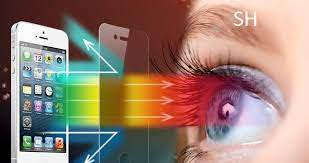NEAR SIGHT (MYOPIA) AND SMART PHONE USE
So many of you have heard of near-sighted, or like the British call it "Short-sighted" and some people get it mixed up with far-sighted or long-sighted, especially in places, I have practiced in Africa and the Americas.
What does it mean? Ask Google or better still ask your Optometrist.
Like it says, near-sighted, means you see better when objects are close to you. The farther away the object is, the more difficult it becomes to have a clear view of the object. It also means you do not have a 20/20 vision.
Like many optometrists said, 20/20 was supposed to be the year of the Optometrist.
Although my Chinese friends professed it was the year of the rat. But, you and I know 20/20 was the year we never saw coming. It was the year that would change our lives forever like no other. A pandemic happened, one we are still dealing with it and it's almost 2022.
You will be surprised that, about 80 million people around the have this eye condition, which is not really a disease but the eye's inability to focus light properly.
Normally, when you look at an object, the eye focuses or bends, if you please, the light falling on the object, so the image of that object falls on the retina the light-sensitive tissue at the back of your eye, which you can imagine to be the film of a camera. In nearsightedness, the image falls in front of the retina instead, because basically, the length of your ball is longer than normal. And this is simple myopia, there is another form of myopia but we are going to keep it simple.
It is also interesting to know that near-sightedness is occurring more than in previous decades, especially in children and this is not surprising, as technology and smartphones become the order of the day. And we all have our noses planted in our cell phones.
So if you or your child begins to experience:
- Excessive blinking
- Tearing
- Frequent rubbing of the eyes
- Tilting of the head or squinting when reading and staring at their mobile device
- Headaches, especially at the front of the head and around the eyes.
- Complaining about tired eyes or double vision.
You may want to visit your local Optometrist.



Comments
Post a Comment